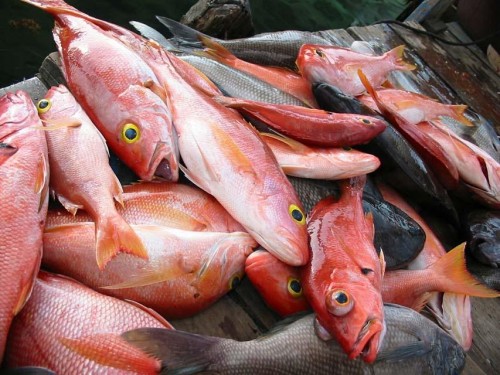Dolores Hebert LeBoeuf
May 12, 2008May 14
May 14, 2008In Louisiana, marine fisheries are regulated by the state (out to three nautical miles) and by the federal government within the exclusive economic zone (EEZ), which extends from three to 200 nautical miles. Since red snapper are a relatively deep-water fish, nearly all come from the federal waters off Louisiana. In nearly every instance, Louisiana state regulations have mirrored the federal ones.
The recent actions in Texas and Florida to establish more liberal red snapper regulations within their state waters has generated a firestorm of controversy – in particular because of those states’ nine nautical-mile boundaries.
Increasing the Texas and Florida catches from their state waters has forced the National Oceanic and Atmospheric Administration’s (NOAA) Fisheries Service to cut the season in federal waters, which basically results in snapper catches from central Gulf states being appropriated by Texas and Florida.
However troubling these actions are, it should be noted that the nine nautical-mile boundaries in Texas and Florida were created under the conditions that existed when those states were admitted to the Union.
The Magnuson-Stevens Act
The principle law governing fisheries in Federal waters is the Magnuson-Stevens Fishery Conservation and Management Act (MSFCMA) of 1976. The original intent was to establish authority over the EEZ to eliminate harvests by foreign fishing fleets.
While conservation of fish stocks was another goal, the MSFCMA also provided for significant expansion of U.S. offshore fishing capability. The result was, within 10 years, an over-capacity in the domestic fleet similar to that previously occurring from the foreign fleets.
The MSFCMA also created a management structure based on regional fishery management councils, with voting members that include the state marine fisheries directors, individuals from each state who are knowledgeable about fishing or conservation, and the regional NOAA Fisheries director. The councils receive advice from their appointed advisory panels and stock assessment panels, and from scientific, statistical and management committees.
The councils are tasked with the production of fishery management plans (FMPs) that must protect resources while maintaining opportunities for commercial and recreational harvests. Plan implementation is the responsibility of the Secretary of Commerce, primarily via NOAA Fisheries Service.
Thus, the Fisheries Service is faced with the unenviable task of applying the legal mandates of Congress (the MSFCMA) and the Gulf of Mexico Council (the FMPs).
In 1996, the MSFCMA was reauthorized by Congress as the Sustainable Fisheries Act (SFA), with the addition of new, very specific mandates that management must prevent overfishing, must be based on the best scientific information available, must be managed as a unit throughout their range to the extent practicable, must include consideration of the importance of fishing resources to fishing communities to minimize adverse economic impacts, and must minimize bycatch. Ultimately, the Gulf Council has a bit of leeway on the implementation of these laws, but NOAA Fisheries has almost none.
The SFA also requires that each FMP sets a level for when overfishing is occurring and a plan for rebuilding overfished stocks (overfishing must be stopped within two years and a plan must be developed to rebuild overfished fisheries within 10 years).
The SFA defines overfishing as excess removal of fish and overfished as a biomass level that has declined below the established threshold.
The latest reauthorization of the MSFCMA in January 2007 included major new mandates, including that FMPs must establish a mechanism for setting annual catch limits that prevent overfishing. Catch limits also must be in place by 2010 for every stock currently overfished.
Beginning Red Snapper Regulations
The first Gulf reef fish (including red snapper) FMP was completed in 1981, and described a declining fishery for red snapper. A 13-inch minimum size limit was the first Gulf regulation, in 1984. Since then, there have been more than 35 federal management measures on red snapper in the Gulf.
In 1988, the first red snapper stock assessment showed that the species was both overfished and undergoing overfishing. That designation required action from the Gulf Council and NOAA Fisheries to recover the stock. The assessment concluded that fishing mortality needed to be cut by 75 percent in order to recover the species by 2000.
The Gulf Council believed that the impacts to fishers from a 75 percent cut would be too severe, and opted for measures that would reduce harvest by 20 percent, postponing additional restrictions for the future.
Postponement of major restrictions has also been possible because new data on red snapper life history has been provided. Snapper can live much longer (more than 50 years) than first thought, so rebuilding schedules have been stretched out.
At the same time, it has been found the most important spawning potential lies with the females that are older than about 15 years, and there are very few of these fish left.
This is why fishers can see so many red snapper out there (catch restrictions have been working – there are lots of young fish) and the population can still be in trouble (because there are so few of the best, oldest spawners).
At least one early action established a criterion that remains. FMP Amendment 1 in 1990 set the recreational/commercial catch allocation at 49 to 51 percent based on 1979-1987 landings data. This allocation ratio has not changed, although the directed fishery has changed significantly over the subsequent years.
The 1988 assessment also described the significant contribution to total fishing mortality that comes from shrimp trawling bycatch mortality of young red snapper. The first bycatch reduction device (BRD) mandate for Gulf shrimp trawls came in 1998; the hope was that about three-quarters of juvenile red snapper would escape each net.
Since then, trials have demonstrated low efficacy (about 15 percent) in releasing juvenile red snapper via previously permitted designs.
Temporary closures of certain juvenile habitat to trawling has been under consideration, but the recent reductions in trawling effort and implementation of new BRD designs have allowed postponement of closure considerations, at least temporarily.









